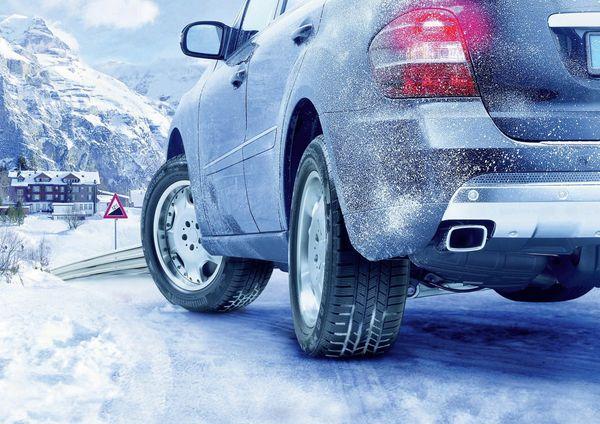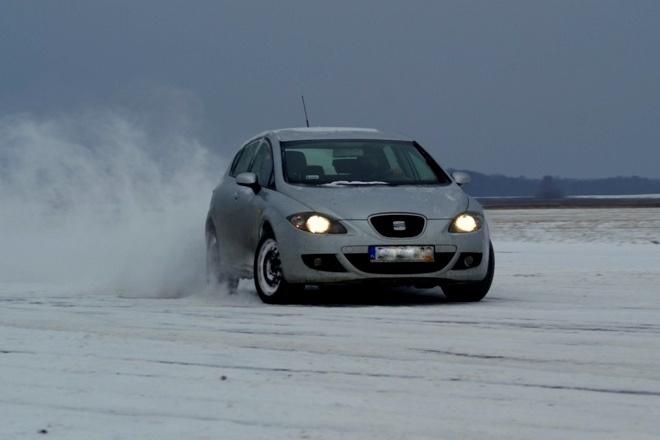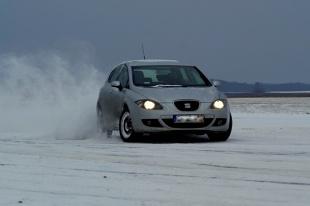
Prepare for winter driving
 Haste is not the best adviser, especially in winter. Drivers, in particular, must follow this principle. On the road, it is recommended to double your vigilance and avoid sudden maneuvers. You can prepare for certain dangerous situations by improving your driving technique. This, however, does not relieve drivers of the obligation to adjust their speed according to road conditions.
Haste is not the best adviser, especially in winter. Drivers, in particular, must follow this principle. On the road, it is recommended to double your vigilance and avoid sudden maneuvers. You can prepare for certain dangerous situations by improving your driving technique. This, however, does not relieve drivers of the obligation to adjust their speed according to road conditions.
Ice, snowdrifts, heavy precipitation limiting visibility, ruts on  roads that appear as frost sets in, snow blown off the fields - all this means that when driving in winter, one must be especially careful. “Although our skills may seem sufficient in good weather conditions, in winter even the best driver must drive very carefully,” says Maciej Kopanski, an instructor at the Test and Training Safety Center (TTSC) in Bednary near Poznań. - And you can safely ride in the winter. All you have to do is follow a few simple tips, he adds.
roads that appear as frost sets in, snow blown off the fields - all this means that when driving in winter, one must be especially careful. “Although our skills may seem sufficient in good weather conditions, in winter even the best driver must drive very carefully,” says Maciej Kopanski, an instructor at the Test and Training Safety Center (TTSC) in Bednary near Poznań. - And you can safely ride in the winter. All you have to do is follow a few simple tips, he adds.
Step 1 Make sure your car is in perfect working order
In winter, all the negligence and shortcomings that we previously underestimated are noticeable. Of great importance here is the year-round operation of the car and the memory of the regular replacement of brake fluid, shock absorbers, fuel filter or coolant. - Heavily worn shock absorbers lengthen the braking distance and make the car less tenacious. In turn, the coolant, which has not been changed for too long, can freeze and, as a result, burst the radiator, explains Kopanski from TTSC. “Such neglect in winter can lead to tragic consequences.
We must not forget about changing tires. Some drivers wait until the first snowfall or use summer tires all year round. On icy or snowy surfaces, winter tires made of a low-temperature compound are much better suited. The special tread pattern prevents the accumulation of snow under the wheels. It is also worth getting snow chains, which we will use in extremely difficult weather conditions. Be sure to thoroughly clean the vehicle before turning the ignition key. We can be fined for cars covered in white fluff. So it's good to have an ice scraper, liquid de-icer, or brush handy.
Step 2 Adapt your driving technique to the road conditions
In winter, special attention should be paid to the smoothness of the ride. Accurately add gas, smoothly release the clutch pedal, and if we slow down, we do it sensitively. Also, steering and turning should be carried out without sudden movements. When turning or approaching an intersection, try to slow down as quickly as possible to avoid skidding. Even if the asphalt appears black, it may be covered with a thin, invisible layer of ice. We must remember that a slippery surface means an increase in stopping distance. The braking distance on slippery surfaces is about five times longer than under normal conditions. In addition, limited visibility and poor road conditions mean that braking techniques in winter require a lot of skill and experience,” explains the instructor from TTSC.
 In winter, we must also remember to keep a good distance from the vehicles in front of us. Even if our driving is flawless, other drivers may surprise us with hard braking, for example. Therefore, concentration and the readiness to react quickly are very important - It is extremely difficult to determine the safe distance between cars in meters. So let's try to define it in units of time. In this situation, the so-called "Two Second Rule". One second is the driver's reaction time, the other is for any maneuver. However, it should be noted that this is the minimum time - the more we have, the better, explains Kopanski.
In winter, we must also remember to keep a good distance from the vehicles in front of us. Even if our driving is flawless, other drivers may surprise us with hard braking, for example. Therefore, concentration and the readiness to react quickly are very important - It is extremely difficult to determine the safe distance between cars in meters. So let's try to define it in units of time. In this situation, the so-called "Two Second Rule". One second is the driver's reaction time, the other is for any maneuver. However, it should be noted that this is the minimum time - the more we have, the better, explains Kopanski.
Step 3 Stay calm in an emergency
Despite the fact that we follow the advice above, it may happen that we cannot avoid a dangerous situation. It is especially easy to slip in winter, so it is worth knowing what to do in such a case. – During emergency braking, apply full force to the brake and apply it as far as it will go. In case of oversteer, turn the steering wheel in the direction of overlapping the rear of the vehicle to align the wheels with the direction of travel. However, if the vehicle is understeered, depress the accelerator pedal. If that doesn't work, we use the brake, explains Kopanski of TTSC.
In theory it seems pretty easy, but in practice these are extremely complex elements and therefore worth practicing before we run into them on the road. A good solution here can be professional training in the field of improving driving technique. When choosing a center, you should pay attention to whether it has a properly prepared track, equipped with, for example, protective plates. They allow you to simulate a skid in fully controlled conditions under the watchful eye of an instructor. During this type of training, we will also learn the theoretical foundations, in particular the physics of driving, which can be especially useful in winter.

